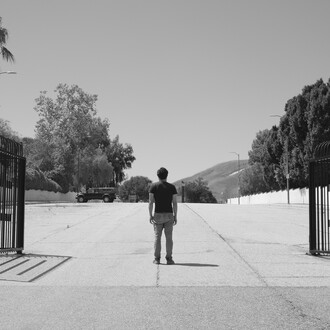The Chronometry exhibition on the third floor presents a large collection of historical and modern clocks and watches of all kinds as well as instruments for measuring very long and very short time intervals.
The Chronometry exhibition is complemented by the 'Sundial Garden' on the sixth-floor terrace, which has direct exposure to the sun. In addition, clocks, watches and other instruments for measuring time are included in many other sections of the museum:
In the museum courtyard outside the entrance to the library, an analemmatic sundial is carved in the pavement. The role of the gnomon – the vertical rod casting a shadow – is performed by museum visitors. They simply stand at the right spot and their shadow indicates the time. While performing this function they also have an excellent view of the large astronomical clock on the clock tower. Moreover, after walking through the base of the tower beneath that clock onto the Zenneck Bridge, they can admire a large, painted vertical sundial on the outside face of the clock tower. For more information on these clocks, see the section on astronomical clocks.
Almost all of the clocks and chronometric instruments displayed indoors "produce" time with the oscillations of pendulums, wound springs, quartz crystals or even individual atoms. The historical sundials shown in these rooms cannot display the time because of the lack of sunshine. However, visitors can get a close look at the many different indicator scales used on the sundials.
In the Sundial Garden, however, visitors can witness directly how the sun "makes" time. Time is what determines our biological life. We forget Copernicus and feel that we are at the centre of the heavens, with the sun following its orbit overhead.
















